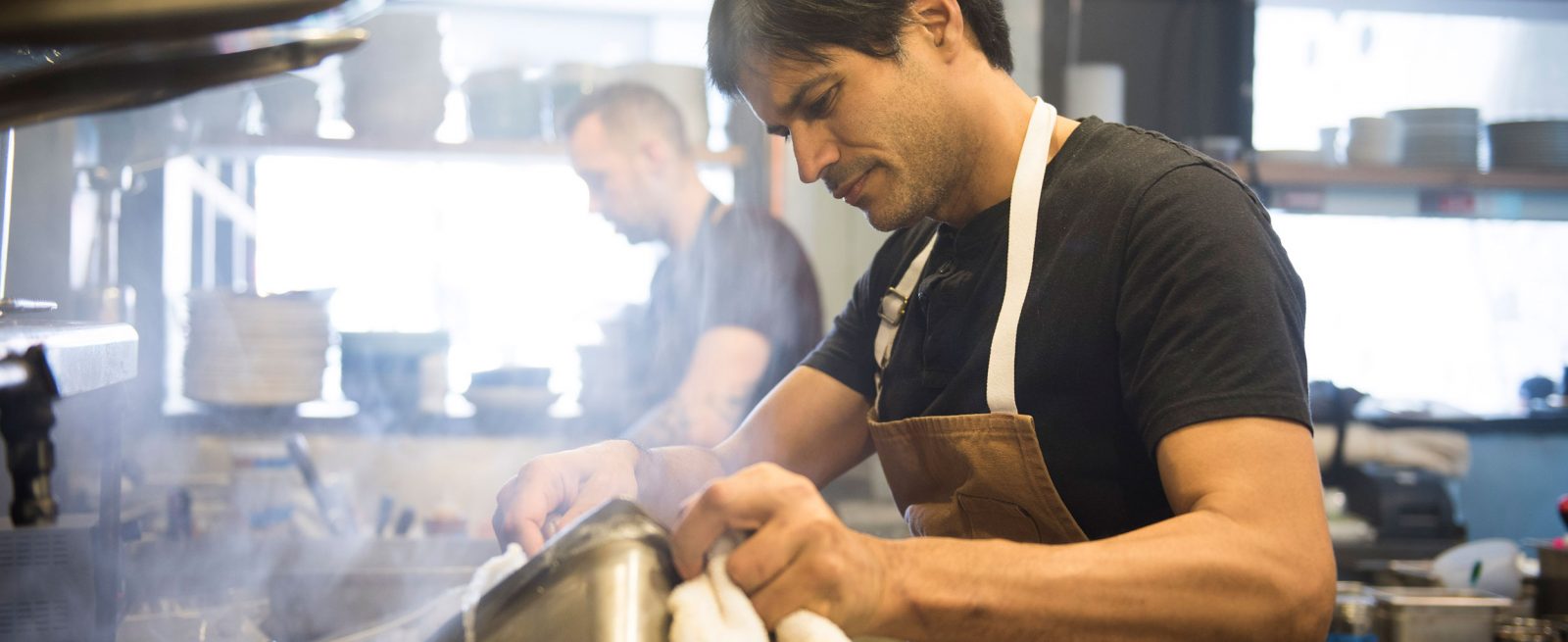Food Hall Brand Finding Community in Emerging Markets
3 Min Read By MRM Staff
The team at Hospitality HQ, lead by Chef Akhtar Nawab has been switching up the food hall model by launching projects designed to emphacize culinary exploration and community connection in markets including Silver Spring, Maryland, Charlotte, North Carolina and Orlando. They are currently up to 18 locations.
When curating these locations, Nawab and his team strive to close the opportunity gap for aspiring chefs and restaurateurs, primarily those of BIPOC identities, through mentorship, from menu curation to business development. The featured vendors of each location reflect the unique cultural fabric of each community, shedding light on niche cuisines and mom-and-pop startups.
The team's most recent projects include Monarch Market in Charlotte, N.C.; Solaire Social, in Silver Spring; and Southern Box Food Hall in Orlando. Expansion plans include Burnsville, Minnesota and Atlanta.
Chef Akhtar Nawab and Rod Daya of Hospitality HQ tell Modern Restaurant Management (MRM) magazine about the connection between food and community and opportunities for aspirational entrepreneurs.

How is the food hall model evolving?
Food halls are no longer about just the food. It is still our primary interest; however, we’ve expanded our focus on curating activities and events and incorporating meeting spaces. They can be utilized as an all-day cafe, where people often work on their laptops for hours. Event spaces have become essential to our food halls. In Orlando, our most recent project, we added a 5000 sq ft space for seated or standing events and a 2000 sq ft kitchen for food prep. As the food hall model evolves, we expect more amenity-style spaces paired with larger developments.
Are there current “hot” markets/regions for food halls?
We are seeing a lot happening in Charlotte, Dallas, Kansas City and all of Florida.
What are some food hall trends you are seeing?
Outdoor spaces with live music are very popular. We also see a handful of food halls with flagship restaurants attached. Our upcoming Atlanta project will feature a micro food hall (only four units), a 2,000-square-foot craft cocktail bar, and a 3,500-square-foot restaurant.
What opportunities do food halls present for entrepreneurial chefs and in what ways does the model support them?
Our approach has always been to make these projects affordable for aspiring entrepreneurs to take the next step to ownership. We have smaller deposits, which makes participation more approachable to start-ups. Vendors can focus on their craft (food, beverage, and customer service) while my team and I manage the back-end work like accounting, operations, and marketing. We try our best to leave the vendors with the core operation so that they can learn how to grow their business into the next phase of their careers.
Community is at the heart of every food hall.
What role does social media play in promoting food halls?
Social media allows our marketing team to showcase the diverse culinary talents and offerings within each of our food halls. Capturing the right content to share with the target audience is pivotal, and many of our resources have been committed to using social media to bring awareness to the community. The evolution of social media marketing has given us various avenues to share pertinent content regarding menu offerings, beverage and cocktail programs, daily programming, and other relevant collateral.
What do guests want from food halls in their communities? How important are community partnerships?
Community is at the heart of every food hall. For us, food is the best way to bring people together. We also organize activities like community yoga, gallery exhibits and pop up vendors for further engagement.
What keeps you enthusiastic about the food hall model?
Everywhere we go, we find such a consistent and interesting throughline. The folks who come to our projects want to build a stronger foundation for the community they love. We have very few food halls that are destination-only. The majority are designed to be the center of the community, the heartbeat.

